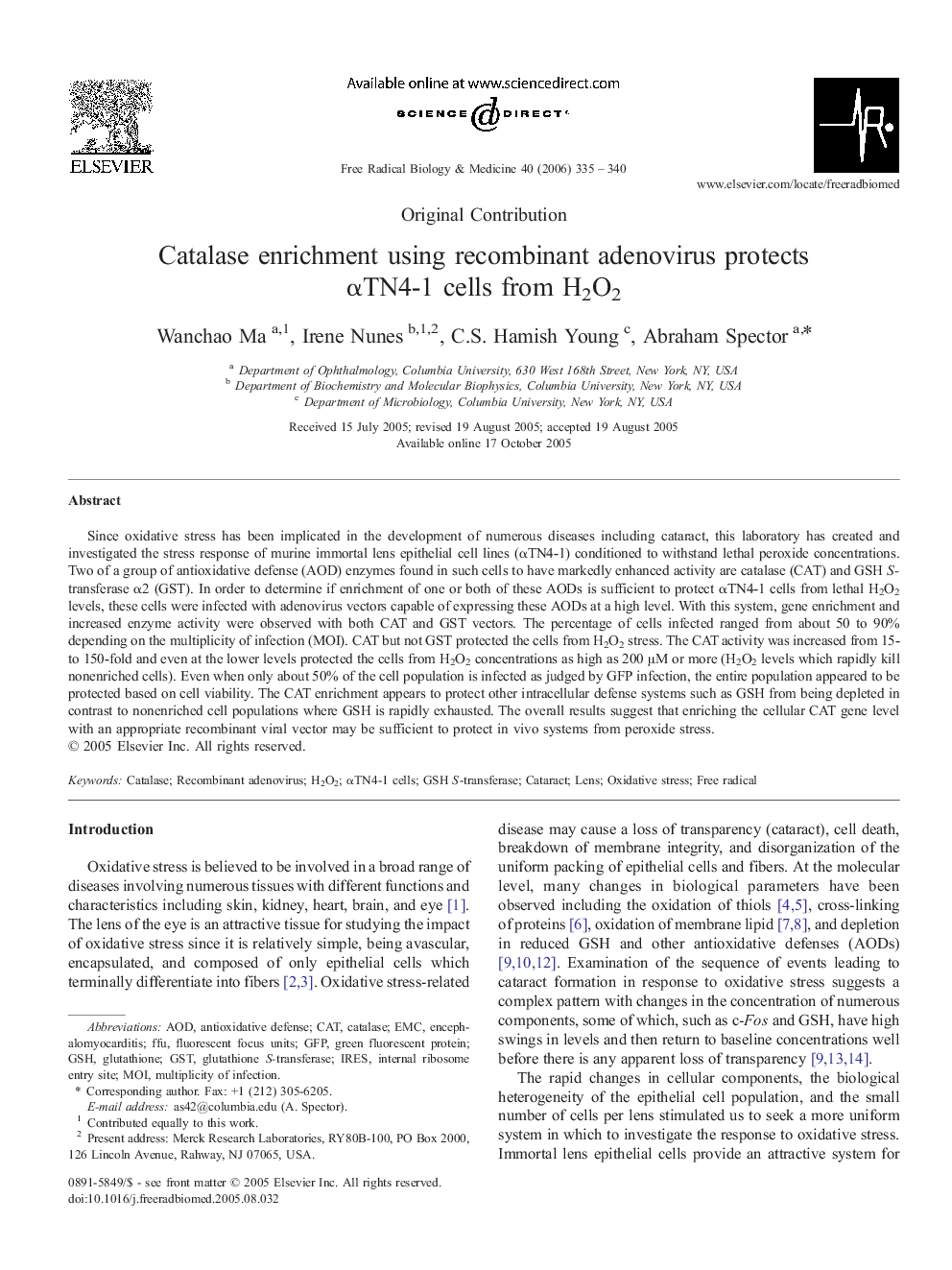| Article ID | Journal | Published Year | Pages | File Type |
|---|---|---|---|---|
| 1912108 | Free Radical Biology and Medicine | 2006 | 6 Pages |
Abstract
Since oxidative stress has been implicated in the development of numerous diseases including cataract, this laboratory has created and investigated the stress response of murine immortal lens epithelial cell lines (αTN4-1) conditioned to withstand lethal peroxide concentrations. Two of a group of antioxidative defense (AOD) enzymes found in such cells to have markedly enhanced activity are catalase (CAT) and GSH S-transferase α2 (GST). In order to determine if enrichment of one or both of these AODs is sufficient to protect αTN4-1 cells from lethal H2O2 levels, these cells were infected with adenovirus vectors capable of expressing these AODs at a high level. With this system, gene enrichment and increased enzyme activity were observed with both CAT and GST vectors. The percentage of cells infected ranged from about 50 to 90% depending on the multiplicity of infection (MOI). CAT but not GST protected the cells from H2O2 stress. The CAT activity was increased from 15- to 150-fold and even at the lower levels protected the cells from H2O2 concentrations as high as 200 μM or more (H2O2 levels which rapidly kill nonenriched cells). Even when only about 50% of the cell population is infected as judged by GFP infection, the entire population appeared to be protected based on cell viability. The CAT enrichment appears to protect other intracellular defense systems such as GSH from being depleted in contrast to nonenriched cell populations where GSH is rapidly exhausted. The overall results suggest that enriching the cellular CAT gene level with an appropriate recombinant viral vector may be sufficient to protect in vivo systems from peroxide stress.
Keywords
Related Topics
Life Sciences
Biochemistry, Genetics and Molecular Biology
Ageing
Authors
Wanchao Ma, Irene Nunes, C.S. Hamish Young, Abraham Spector,
